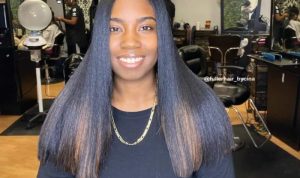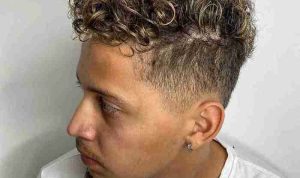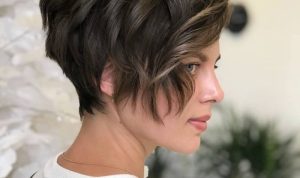Natural Hair Braided Hairstyles: A Comprehensive Guide
Natural hair braided hairstyles – Natural hair braiding offers a stunning array of styles, combining beauty, versatility, and cultural significance. From intricate cornrows to voluminous box braids, these protective styles offer a plethora of options for showcasing the unique texture and beauty of natural hair. This guide delves into the world of natural hair braiding, covering techniques, maintenance, styling, and health considerations.
Introduction to Natural Hair Braided Hairstyles
Braided hairstyles for natural hair are incredibly versatile, allowing for a wide range of looks from sleek and sophisticated to playful and vibrant. The beauty lies in the ability to adapt styles to individual preferences and hair textures. Braiding’s cultural significance is profound, varying across different communities. In many African cultures, intricate braiding patterns hold deep symbolic meaning, often representing social status, tribal affiliation, or even personal narratives.
Historically, braiding techniques have evolved over centuries, adapting to diverse materials and cultural influences. Ancient civilizations utilized natural fibers and techniques passed down through generations, leading to the diverse array of styles we see today.
Types of Natural Hair Braids, Natural hair braided hairstyles
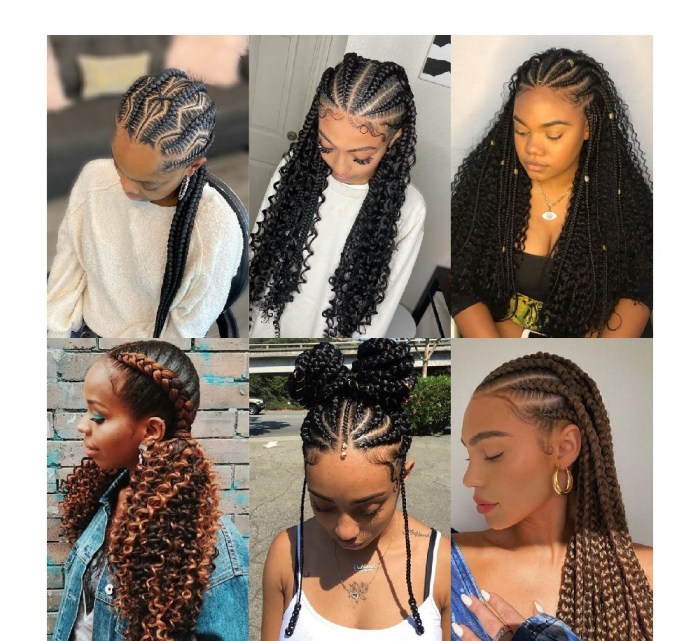
Source: curlsqueen.com
Numerous braid styles cater to different hair lengths, textures, and preferences. Each style employs unique techniques and materials. Cornrows, for example, are close-to-the-scalp braids that create a sleek, elegant look, often requiring skilled braiding expertise. Box braids, on the other hand, involve braiding extensions into sections of natural hair, resulting in thicker, more voluminous braids. Individual braids are simpler, involving braiding smaller sections of hair without extensions.
The choice of material, such as synthetic hair or human hair extensions, also impacts the final look and feel of the braid.
| Style Name | Difficulty Level | Time Required | Hair Length Needed |
|---|---|---|---|
| Cornrows | Medium to High | 2-6 hours | Medium to Long |
| Box Braids | Medium | 4-8 hours | Medium to Long |
| Individual Braids | Low to Medium | 2-4 hours | Short to Long |
| Tree Braids | High | 6+ hours | Long |
Hair Preparation and Maintenance
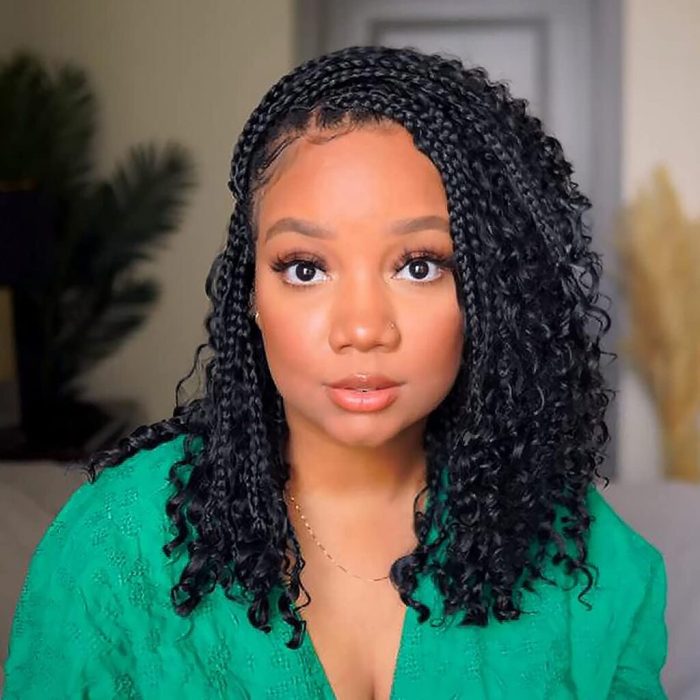
Source: blackhealthmatters.com
Proper hair preparation is crucial for achieving long-lasting and healthy braided styles. This involves cleansing the hair with a sulfate-free shampoo to remove buildup, deep conditioning to add moisture, and thoroughly detangling to prevent breakage. Recommended products include moisturizing conditioners, leave-in conditioners, and lightweight oils. Maintaining braided hairstyles involves regular scalp massages to stimulate blood flow and prevent dryness, gentle cleansing with a diluted shampoo or co-wash, and protecting the braids from excessive manipulation or friction.
Keeping the braids clean and moisturized will extend their lifespan and protect the hair’s health.
Braiding Techniques and Tutorials
Mastering braiding techniques requires practice and patience. Here are three basic braid styles with step-by-step instructions:
- Simple Three-Strand Braid: 1. Divide a section of hair into three equal strands. 2. Cross the right strand over the middle strand. 3.
Cross the left strand over the new middle strand. 4. Repeat steps 2 and 3 until the end of the hair section, securing with a hair tie.
- Cornrows: 1. Section the hair into small, neat rows. 2. Begin braiding each section close to the scalp, incorporating new strands of hair from the scalp with each braid. 3.
Continue braiding until the end of the hair section, securing with a small elastic band. 4. Repeat this process for all sections. This requires a firm, consistent grip and even tension throughout the braid.
- Box Braids: 1. Section the hair into square parts. 2. Attach braiding hair extensions to each section at the roots. 3.
Braid the extensions with the natural hair, creating three strands. 4. Continue braiding until the end of the hair section, securing with a small elastic band. 5. Repeat for all sections.
This technique requires precision in sectioning and consistent tension.
Essential braiding tools include a rat-tail comb for sectioning, hair clips to hold sections in place, and hair ties or elastics to secure the braids. A good quality braiding gel or hair wax can also aid in keeping the braids neat and tidy.
Styling and Accessories
Braided hairstyles offer diverse styling possibilities. Updos, half-updos, and various braid combinations add visual interest. Accessories like beads, ribbons, and hair wraps enhance the overall look. Creative styling involves incorporating twists, curls, or even adding decorative elements.
- Create a high bun using cornrows.
- Incorporate colorful beads into box braids.
- Add a ribbon to a simple three-strand braid for a touch of elegance.
- Combine cornrows and individual braids for a unique look.
Adding accessories is easily achieved by incorporating them into the braiding process or attaching them after the braids are complete.
Natural hair braided hairstyles offer a versatile range of protective styles, ideal for managing length and promoting growth. The techniques involved can also be adapted for those with thicker textures, and if you’re looking for inspiration beyond braids, exploring options like the ones shown in this helpful guide on hairstyles for thick wavy hair guys might spark new ideas.
Ultimately, the goal is finding styles that suit your hair type and personal preferences, whether it’s intricate braids or other creative looks.
Hair Health and Considerations
Maintaining scalp health and preventing hair breakage are paramount. Tight braiding can lead to traction alopecia, so ensuring braids are not too tight is crucial. Regular scalp massages stimulate blood flow, and keeping the scalp clean and moisturized prevents dryness and irritation. Signs of potential problems include excessive scalp itching, pain, or noticeable hair loss. If any of these occur, consult a dermatologist or trichologist.
Inspiration and Trends
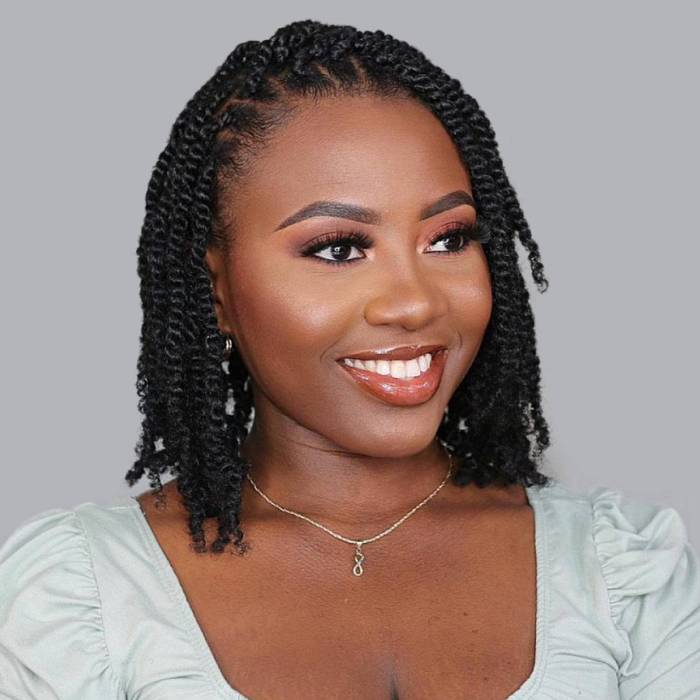
Source: latest-hairstyles.com
Current trends in natural hair braiding showcase a fusion of traditional techniques and modern styling. Social media platforms and celebrity styles significantly influence these trends, with vibrant colors, intricate patterns, and unique accessories being popular choices. A range of styles, from sleek and minimal cornrows to voluminous, colorful box braids, are widely seen.
Visual descriptions: Imagine intricate cornrows cascading down the back of the head, each braid meticulously placed, creating a sleek and elegant look. Envision box braids, thick and voluminous, adorned with colorful beads and cascading down the shoulders, showcasing a vibrant and playful style. Picture a crown braid, delicately encircling the head, a testament to refined elegance and artistic skill.
Each style represents a unique expression of personal style and creativity.
Question & Answer Hub: Natural Hair Braided Hairstyles
How long do natural hair braids typically last?
The lifespan of natural hair braids varies depending on the style, hair type, and maintenance. Generally, they can last anywhere from 4 to 8 weeks.
Can I wash my hair while it’s braided?
Yes, but you should use a gentle, sulfate-free cleanser and avoid excessive scrubbing. Focus on cleansing the scalp and allow the braids to air dry completely.
How often should I moisturize my scalp with braids?
Moisturizing your scalp at least once a week is crucial to prevent dryness and itching. Use a leave-in conditioner or scalp oil.
What are the signs of damaged hair in braids?
Signs of damage include excessive shedding, breakage, dryness, or unusual pain or tightness at the scalp. If you notice these, consult a hair professional.



